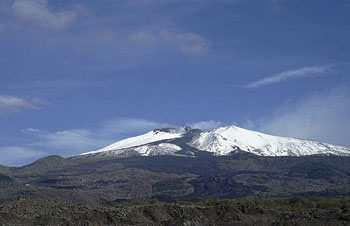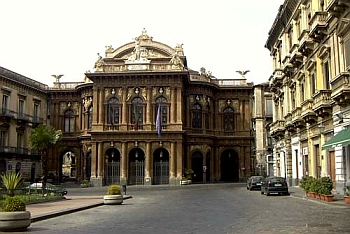|
|
|
|
|
|
For everybody
|
- Boat rental (our own 6 seats boat);
- Canoe and bike rental;
- Excursions on Etna;
- Rafting in the Gole dell’Alcantara;
- •“Strada del Vino e dei Sapori”: wine and food itineraries;
|
|
For lovers of sports
|
|
|
For children
|
|
|
PLACES TO VISIT
|

|
Taormina
Called the „Pearl of the Ionian Sea“, Taormina is perched on a rocky spur and overlooks the sea. It is considered the main tourist attraction of Sicily and the best-know destination of the international élite tourism.
It has been a Greek and Roman colony and it presents a lot of historical buildings, above all the wonderful Teatro Antico, site of several international shows and events.
|
Etna
Mount Etna stands at 3,350 m above the sea level and it is the highest and famous – still active - volcano in Europe.
Here is the National Parkland, a protected area that offers numerous opportunities of excursions where you can admire the black lava around the craters from the most recent eruptions together with the old grey lava of the old flows and the lunar landscapes created during the centuries.
Etna is capped with snow for most of the winter season and it is a skiing resort with ski-lift facilities.
www.parks.it/parco.etna/
|

|

|
Gole dell’Alcantara
The name derives from “Al Quantarah”, Arabic expression that means “among the mountains”. In the mist of time, a small volcano north of Mount Etna woke and poured forth an enormous quantity of lava which flowed down to the sea. The tortuous route taken by the lava flow was followed by a torrent of water which ploughed as channel through it, smoothing the lava and clearing away the aggregate. Towards the end of its journey, the water encountered more friable ground and, sweeping onwards, exposed two sheer cliffs of very hart basalt that had cooled and hardened into fascinating prism-like shapes.
This spectacular gorge is now a natural border between Catania and Messina. Wearing a pair of boots, it is accessible for a stretch between 50 and 200 m from May to September, when the water level is low. It is also possible to go rafting taking part in packaged tours.
www.parks.it/parco.alcantara
|
Catania
Rich in historical and artistic elements, it presents a lot of important witnesses of the so called “Sicilian Baroque ”.
First Greek and later Roman colony, Catania has been almost completely destroyed by several earthquakes following Etna’s eruptions. In 1693 a catastrophic earthquake razed the city into the ground: it followed a new city planning and a sumptuous reconstruction according to the baroque style.
Very interesting buildings of the Greek and Roman ages are the “Teatro Romano” (II century), the “Odeon” (III century), the “Anfiteatro” (II century), the Terme dell’ Indirizzo, the Terme della Rotonda, the Terme Achlliane.
Via Crociferi is regarded as Catania’s baroque street par excellence. A number of buildings, particularly in the firs section, give the place a magnificent effect.
|

|

|
Siracusa
Founded and colonized in the VIII century by Greeks from Corinth, Siracusa was already called by Cicerone “the biggest and most beautiful city of all Greek cities”. Together with the Necropoli rupestre in Pantalica, it has been declared Human Heritage by UNESCO.
The fame of Siracusa is due to its Greek past which has left s number of vestiges such as the very famous Fonte Aretusa, a fountain of fresh-water situated in the center of Ortigia. In the archeological area of Neapolis, the old heart of the city, is located the Teatro Greco which was, thanks to its excellent acoustics, the site of oratorical and dramatic performances that animated the political and cultural life of the city.
Teatro Greco is the site of classical performances of the INDA, the Old Drama National Institute (see the web site www.indafondazione.org/ for information and tickets).
|
|
|
|







